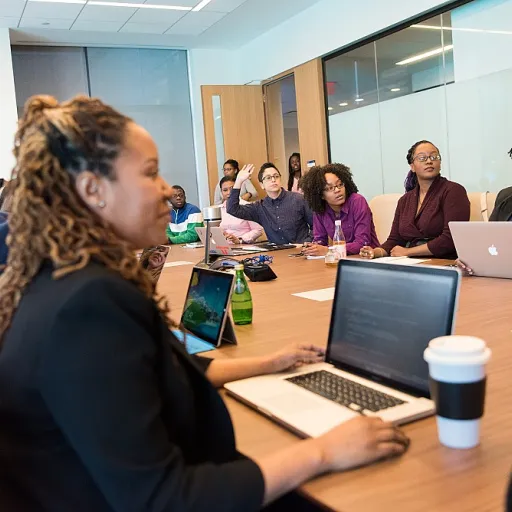
Understanding the importance of backfilling a position
Why Backfilling Matters for Your Organization
When an employee leaves a job—whether due to a promotion, resignation, or a leave of absence—the resulting vacant position can disrupt the team and overall business operations. Backfilling a position is not just about replacing an employee; it’s about maintaining the continuity of work, team morale, and organizational performance. Failing to backfill positions in a timely manner can lead to increased workloads for current employees, decreased productivity, and even burnout. This makes the backfilling process a critical part of any talent acquisition strategy.
The Ripple Effect of a Vacant Position
Every role in a company contributes to the larger business objectives. When a position is left unfilled, the impact can be felt across the team and sometimes the entire organization. Tasks may be redistributed among current employees, which can affect their own job satisfaction and performance. Over time, this can create a less positive work environment and may even lead to further turnover. By prioritizing position backfilling, companies help ensure that business operations remain smooth and that teams continue to function effectively.
Strategic Backfilling: More Than Just a Quick Fix
Effective backfilling is not about rushing to post a job and fill a role as quickly as possible. It’s about taking a strategic approach to identify the best practices for filling the position, considering both short-term needs and long-term organizational goals. This involves understanding the job description, evaluating whether internal mobility or external hiring is the right move, and ensuring a smooth transition for the team and the new hire. Succession planning and a well-defined hiring process will help companies stay prepared for unexpected departures and minimize disruption.
- Backfilling positions helps maintain business continuity and team stability
- It supports a healthy work environment by preventing overload on current employees
- Strategic backfilling aligns with long-term talent acquisition goals
For organizations looking to optimize their approach, exploring the benefits of temp-to-hire positions can be a valuable part of the backfilling strategy. This option allows companies to evaluate candidates in real work scenarios before making a permanent hiring decision, which can help ensure a better fit for both the employee and the organization.
Identifying the right timing for backfilling
Recognizing the Right Moment to Start Backfilling
Timing is everything when it comes to backfilling a position. Acting too quickly or too late can disrupt your team’s workflow and impact business continuity. The process of backfilling starts as soon as you anticipate a vacant position, whether due to an employee promotion, leave of absence, or someone leaving the company. Proactive succession planning will help your organization stay ahead of potential gaps.
- Planned departures: If an employee has given notice or is scheduled for a leave, begin the backfill process early. This gives your team time to adjust and ensures a smooth transition.
- Unplanned exits: When an employee leaves suddenly, it’s important to quickly assess the impact on the team and business. Prioritize critical roles that affect daily operations or customer service.
- Internal changes: Promotions or lateral moves can also create backfill positions. Review your current employees to see if internal mobility is an option before posting the job externally.
Understanding the urgency of the role is key. For example, if the position is essential for payroll or compliance, delays in backfilling could have serious consequences for your business. For more on maintaining compliance during transitions, see this comprehensive payroll compliance checklist.
Best practices suggest regularly reviewing your workforce plan and keeping job descriptions updated. This will help you act quickly when it’s time to backfill a position, minimizing disruption and supporting a healthy work environment for your team.
Defining the ideal candidate profile
Clarifying the Profile for a Successful Backfill
When an employee leaves a position—whether for a promotion, a leave of absence, or to pursue opportunities outside the company—defining the ideal candidate profile is a crucial step in the backfilling process. This step will help ensure the new hire not only fills the vacant position but also contributes to the long-term success of the team and organization. Start by reviewing the current job description. Is it still accurate, or has the role evolved since the last time it was filled? Sometimes, the responsibilities of a position shift as business needs change or as the team adapts to new challenges. Talk to current employees who work closely with the role to get their perspective on what skills and qualities are most valuable for success in the position. Consider these best practices when defining your ideal candidate profile:- Assess Core Competencies: Identify the must-have skills and experience needed to perform the job effectively. This includes both technical abilities and soft skills that fit your work environment.
- Evaluate Cultural Fit: Think about the team dynamics and the company culture. The right backfill should align with your organization’s values and help maintain a positive work environment.
- Plan for the Future: Look beyond immediate needs. Consider how the new hire can grow with the business and support succession planning. This approach will help you avoid frequent position backfilling in the future.
- Balance Internal and External Talent: Sometimes, current employees are ready to step up. Internal mobility can be a powerful tool for employee retention and motivation, but external hiring may bring in fresh perspectives and skills.
Balancing internal mobility and external hiring
Choosing Between Internal and External Talent
When a position becomes vacant, companies face a critical decision: should they promote from within or look outside for new talent? This choice impacts not only the immediate backfill but also the long-term health of the team and organization.
- Internal Mobility: Promoting current employees to fill a backfill position can boost morale and demonstrate a clear path for career growth. Employees who are familiar with the company culture and processes often adapt quickly to new roles, reducing the time backfill takes. Internal moves also support succession planning and help retain valuable talent.
- External Hiring: Sometimes, the best fit for a role requires skills or perspectives not currently available within the team. External hiring can bring fresh ideas and fill skill gaps, especially when the business is evolving or the job description has changed significantly since the last employee left. However, onboarding new hires takes time and may temporarily disrupt the work environment.
Balancing these options means looking at the specific needs of the position, the availability of qualified internal candidates, and the company’s long-term goals. For example, if an employee promotion leaves another vacant position, the organization must be prepared to backfill positions in a way that doesn’t create a domino effect of vacancies.
Best practices suggest regularly reviewing your talent pool and maintaining open communication with employees about potential career paths. This approach will help ensure that when a backfilling position is needed, the company can act quickly and effectively, whether by promoting from within or launching an external hiring process. Ultimately, a thoughtful balance between internal mobility and external hiring strengthens the business and supports a resilient, engaged team.
Streamlining the recruitment process for backfilling
Optimizing Recruitment Steps for Backfilling Success
When a position becomes vacant, the urgency to backfill can sometimes lead to rushed decisions. However, streamlining the recruitment process is essential to ensure the right employee joins the team, especially when replacing an employee who left or was promoted. A well-structured process will help your organization maintain productivity and morale, while also supporting long-term business goals.
- Clarify the job description: Before you post the job, revisit the responsibilities and expectations for the role. Consider how the position has evolved and what skills are now needed. This clarity will help attract candidates who are a true fit for the current work environment.
- Leverage succession planning: If your company has a succession plan, use it to identify current employees who may be ready to step into the vacant position. This can reduce time to backfill and support internal mobility, which boosts engagement and retention.
- Standardize the hiring process: Use consistent steps for screening, interviewing, and evaluating candidates. This not only speeds up hiring but also ensures fairness and compliance. Documenting each stage will help you track progress and identify bottlenecks when backfilling positions in the future.
- Balance speed with quality: While it’s important to fill the position quickly, don’t sacrifice quality. Rushed hires can lead to mismatches and higher turnover, which disrupts the team and business operations. Set realistic timelines and communicate them to all stakeholders.
- Engage the team: Involve relevant team members in the hiring process. Their input can help you assess cultural fit and technical skills, and they can also help onboard the new employee once the position is filled.
Streamlining your process for backfilling a position is not just about speed; it’s about making sure the right person joins your organization at the right time. By following best practices and focusing on both immediate needs and long-term goals, your company can minimize disruption and support a healthy, productive work environment.
Managing transitions and knowledge transfer
Ensuring Smooth Handover and Knowledge Continuity
When an employee leaves a position, the transition period can be a vulnerable time for any organization. Backfilling a position is not just about finding a replacement; it’s about ensuring that critical knowledge and processes are transferred effectively to maintain business continuity. Here are some best practices to help manage transitions and knowledge transfer during the backfilling process:
- Document Key Processes: Before the current employee leaves, encourage them to document their daily tasks, ongoing projects, and important contacts. This documentation will help the new hire or internal promotion quickly get up to speed.
- Structured Handover: Arrange a structured handover period if possible. This allows the departing employee to train the incoming person, answer questions, and clarify responsibilities. Even a short overlap can make a significant difference in the onboarding process.
- Leverage Current Employees: Involve team members who worked closely with the departing employee. They can provide additional insights into the role and help fill any gaps in the knowledge transfer process.
- Update Job Description: Use this transition as an opportunity to review and update the job description. Ensure it reflects the current needs of the business and the team, which will help attract the right candidates and clarify expectations for the backfill position.
- Succession Planning: Integrate succession planning into your talent acquisition strategy. Identifying potential internal candidates for future backfill positions can reduce the time backfill takes and support long term organizational stability.
- Monitor the Transition: After the new employee starts, check in regularly to address any challenges and ensure they have the support they need. This ongoing support will help them integrate into the work environment and contribute effectively to the team.
Effective management of transitions and knowledge transfer not only helps fill vacant positions smoothly but also strengthens the company’s resilience. By prioritizing these steps, organizations can minimize disruption, maintain productivity, and foster a positive work environment during times of change.












